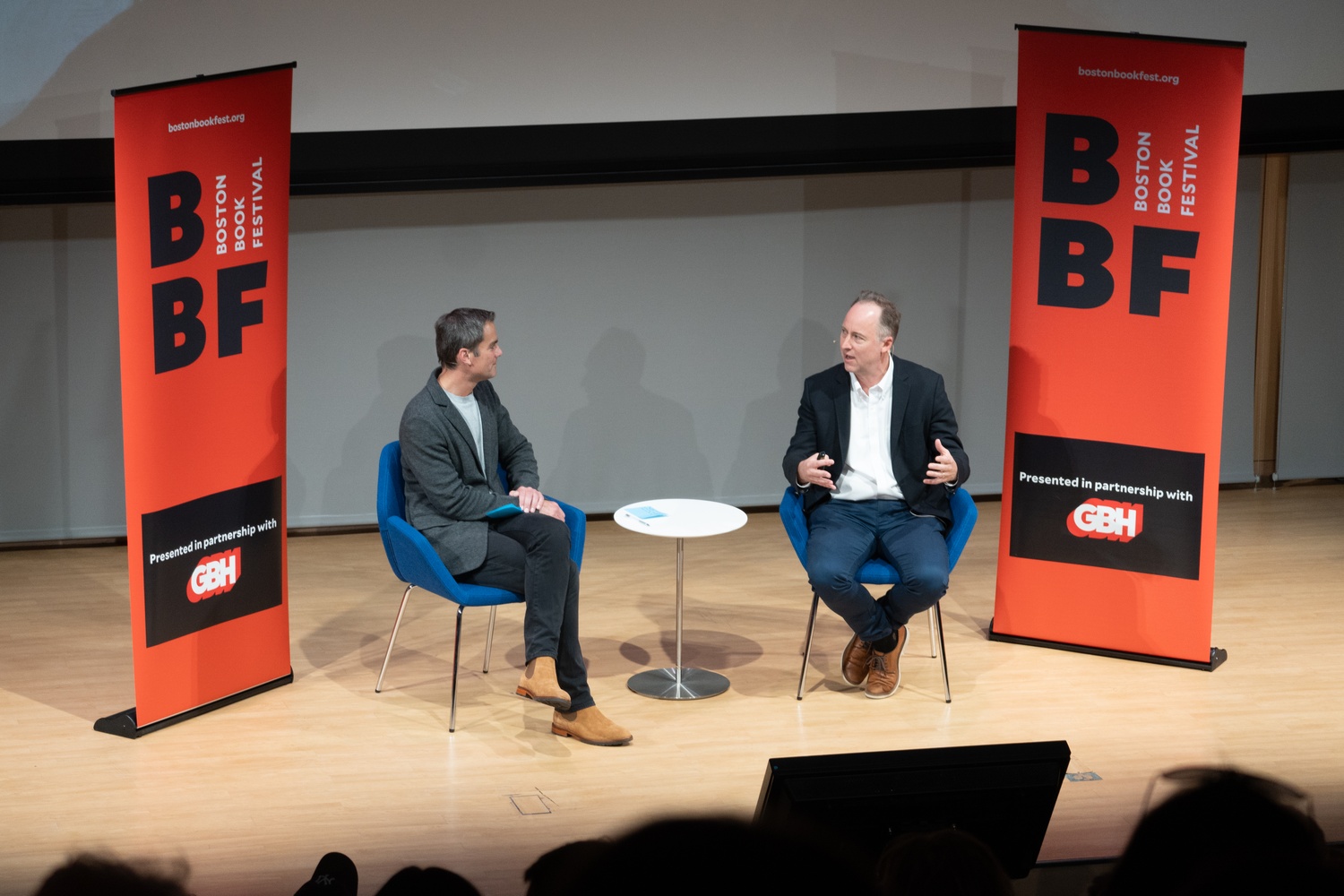
News
Harvard Grad Union Agrees To Bargain Without Ground Rules

News
Harvard Chabad Petitions to Change City Zoning Laws

News
Kestenbaum Files Opposition to Harvard’s Request for Documents

News
Harvard Agrees to a 1-Year $6 Million PILOT Agreement With the City of Cambridge

News
HUA Election Will Feature No Referenda or Survey Questions
Sebastian Smee’s Impressions on Impressionism: Boston Book Festival Art History Keynote

The Boston Book Festival’s Art History Keynote was packed this year, with all 300 seats of the Boston Public Library’s Rabb Hall filled and even more festival-goers hoping to hear the speech from the back of the room. In the Keynote, delivered on Oct. 26, Pulitzer Prize-winning art critic Sebastian Smee discussed his book, “Paris in Ruins,” which tells the stories of three great Impressionist painters — Édouard Manet, Berthe Morisot, and Edgar Degas — during the tumultuous year between the summer of 1870 and the spring of 1871.
During this period, these three artists witnessed the German siege and starvation of Paris, followed by bloody street battles and the burning of central Paris when the Commune, established by radical republicans, was crushed by the French Army.
In his Keynote, Smee discussed the ways in which this historical context influenced these Impressionist painters and art history as a whole. He argued that in the aftermath of the brutal conditions of the siege and the “absolutely atrocious week of violence” that followed the Commune’s revolt, the Impressionists sought “to reunify French society.”
The “impulse towards healing and repair” represented in the paintings of Manet, Morisot, and Degas turns the focus of their art away from the ruins of Paris towards the beauty of transient things like “shifting seasons, [and] glimpsed street scenes.”
Smee described the “wonderful letters” written by Manet and Morisot, who were among the very few Impressionists who stayed through the siege and the insurrection.
“So full of personality, a sort of moodiness, and anxiety, but also optimism at times,” Smee said.
These letters reveal how the work they made was “interwoven with the incredible and traumatic” dynamic that they were in.
A key element of the talk was a discussion of where the Impressionists fit into the political dynamics of the time. Smee described the “patriotism” and “democratic spirit” that is revealed in the types of scenes the Impressionists chose to paint — rather than mythology or religious subject matter, they painted Paris as it truly was, with an open air painting style.
“[These elements] reveal a kind of democratic spirit, you know, the small ‘r’ republican spirit that they had,” Smee said.
Smee used Monet’s iconic “Impression, Sunrise” image to illustrate how the Impressionists did not ignore the realities of postwar France in their airy, flighty style. Although the ripples of the water and the small figure in the boat are foregrounded, a careful viewer can observe smokestacks and cranes in the mist behind. Smee noted this image of “France restoring itself,” situating the Impressionists once again in the context of history.
The keynote’s audience contained members who have admired Smee’s work over his numerous years of art criticism. Audience member Laura Buckley has been a follower of Smee’s since he was a writer for the Boston Globe’s art section.
When asked which of his articles she enjoyed the most, Buckley answered, “He could be very sharp with his criticism of certain art, artists, or exhibits. I can’t think of anything in particular but I did appreciate his wit and his sarcasm.”
After the address, audience member Sandra L. Cullison shared “We had actually seen him give much the same talk at the Cambridge public library!”
A second audience member, Jim J. Annis, attended the speech with Cullison.
Annis referenced their repeat attendance to this talk, adding, “So obviously we liked it very much!” Cullison and Annis have placed a hold on Smee’s book at the library.
In a conversation with Smee after the speech, the art critic commented on the important history that underscores key artistic movements.
“There’s so much history behind a lot of the art movements and the art works we take for granted, and for me, I really wanted to dive into some of that history and make people understand that these works don’t come out of nothing, they’re rooted, grounded in history — and that includes politics, social conditions, and sometimes warfare.”
When asked what he wishes the audience would take away from his speech, Smee replied, “Impressionism is more complicated and more interesting than you might think.” That certainly seems to be the message that attendees of the Arts History Keynote left with.
—Staff writer Laura B. Martens can be reached at laura.martens@thecrimson.com.
Want to keep up with breaking news? Subscribe to our email newsletter.
From Our Advertisers

Over 300+ courses at prestigious colleges and universities in the US and UK are at your disposal.

With innovative financial tools combined with financial education, Collegiate empowers students to take control of their finances and build confidence in their money management skills.

Serve as a proctor for Harvard Summer School (HSS) students, either in the Secondary School Program (SSP), General Program (GP), or Pre-College Program.

With an increasingly competitive Law School admissions process, it's important to understand what makes an applicant stand out.

Welcome to your one-stop gifting destination for men and women—it's like your neighborhood holiday shop, but way cooler.

Admit Expert is a premium MBA admissions consulting company, helping candidates secure admission to top B-schools across the globe with significant scholarships.
